Home care app ensures care workers have enough travel time between care visits
Home care managers can now get an indication of the time needed to travel between care visits when they are organising rotas, due to a new travel time feature by home care software provider CareLineLive.
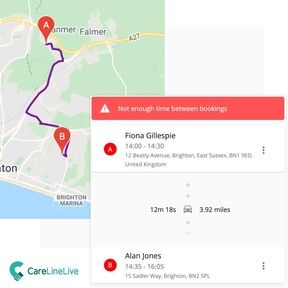
Having travel time information can help care co-ordinators plan a care worker’s rounds quickly and logically, and ensures they arrive on time.
Dec Norton, director of development at CareLineLive says: “Planning a carer’s rota can sometimes be challenging, especially when you’re not sure of the time required to travel from one call to the next. Sometimes the time allocated is not enough, which has implications on client visits, for example, arriving late or having to cut short visits.
”As part of CareLineLive’s total home care management system, CareLineLive’s travel time estimates feature gives managers who are organising carers’ rotas an indication of the time needed to travel between visits. Using the Google Maps platform, the system gives the most accurate estimation of the journey the carer will take, and how long it will take them to do it. The mode of transport for a carer can be taken into account, allowing estimates to be calculated whether they’re driving, walking, cycling, or even taking public transport.”
In CareLineLive’s Management Platform, once the travel time estimates feature is activated, an indicator is displayed on the roster screen that gives a graphical representation of the travel time estimate. Clicking on the indicator shows more detailed information about the journey; including distance and expected route, as well as time.
The feature also recalculates journeys when rota changes need to be made. As the order of visits are adjusted, prompts are given to update, and display travel estimates for the new running order to check that it’s suitable before committing to any changes.
In addition, the travel time estimate feature offers flexibility, for example to account for inactivity between visits, such as lunch breaks, travel time estimates are automatically excluded for any visits that are more than two hours apart.
CareLineLive has been very beneficial to home care agencies during pandemic
Janette Watkins who runs Southover Community Care, a home care agency based in Lewes, says: “I have used the real-time call monitoring to help locate our carers so I can easily deliver their PPE supplies to them. This helps with social distancing and negates any unnecessary trips for our carers.

“I also think the COVID-19 information and hand washing reminders on the Carer Companion app was an excellent idea. It provides a handy reminder for our carers when they are with their clients.
“At first my carers were apprehensive about using CareLineLive. However once they got used to it, they found it easy to check in and out of visits. They also like that the information can be updated in real-time e.g. tasks like catheter bag changes, and information is available for different carers who visit the same clients, so they are always kept up to date.
“Ensuring their rota is always correct has also saved them time – carer visits are no longer doubled up, unlike our old spreadsheet system!”
Mr Norton, believes having holistic management software and an ‘always on’ pipeline of development is essential.
As well as the time travel estimates, due to COVID-19 and the importance of staying in touch, CareLineLive redesigned its Family & Friends Portal to include access to care notes and tasks and being able to view multiple family members. He believes the home care sector is really starting to embrace technology, which has been boosted by the Care Quality Commission’s push for call monitoring and software use.
Over the next year, CareLineLive is planning to focus on “dynamic care planning, monitoring, and observation of service user welfare. This will help carers to have a more structured and intelligent way of carrying out and recording observations.
“COVID-19 has been somewhat of an awakening to understanding the benefits and necessities of using a cloud-based system. Having complete visibility and being able to react quickly is more important now than it’s ever been,” says Mr Norton.
Latest News
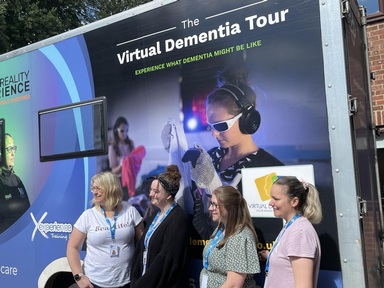 29-Jul-24
Dementia Bus gives carehome.co.uk staff insight into life with dementia
29-Jul-24
Dementia Bus gives carehome.co.uk staff insight into life with dementia
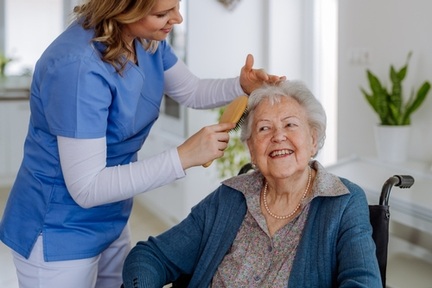 27-Jul-23
UK's top home care agencies in 2023 revealed
27-Jul-23
UK's top home care agencies in 2023 revealed
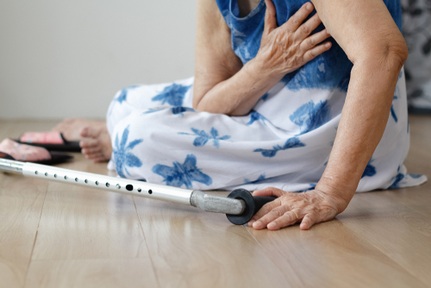 30-Nov-22
A quarter of older people keep their falls secret from family
30-Nov-22
A quarter of older people keep their falls secret from family
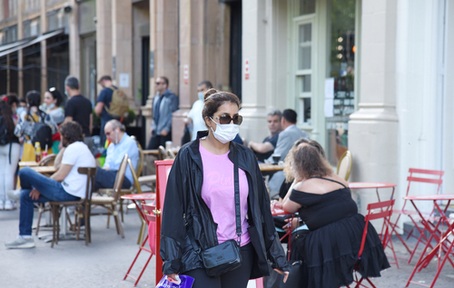 29-Nov-22
'Covid-19 has not gone away' say terminally ill
29-Nov-22
'Covid-19 has not gone away' say terminally ill
 28-Nov-22
IT consultant who received poor care opens 'compassionate' home care business
28-Nov-22
IT consultant who received poor care opens 'compassionate' home care business